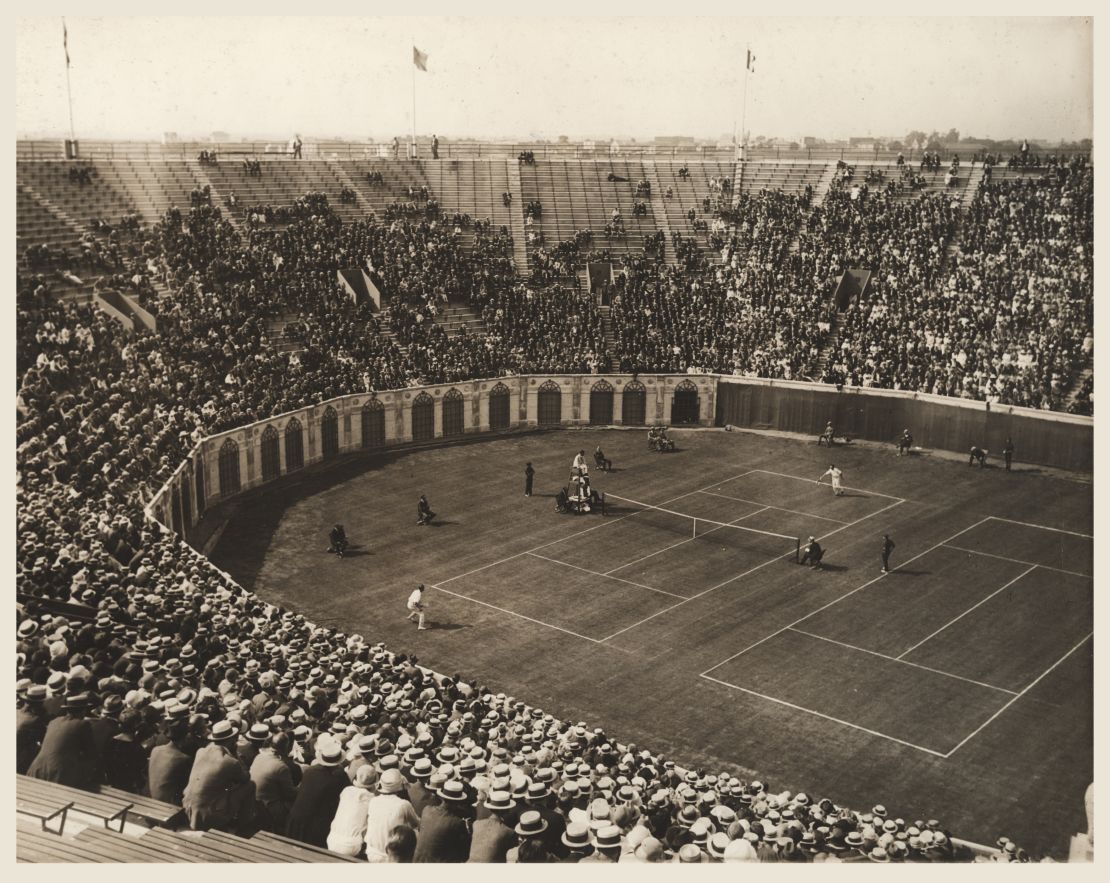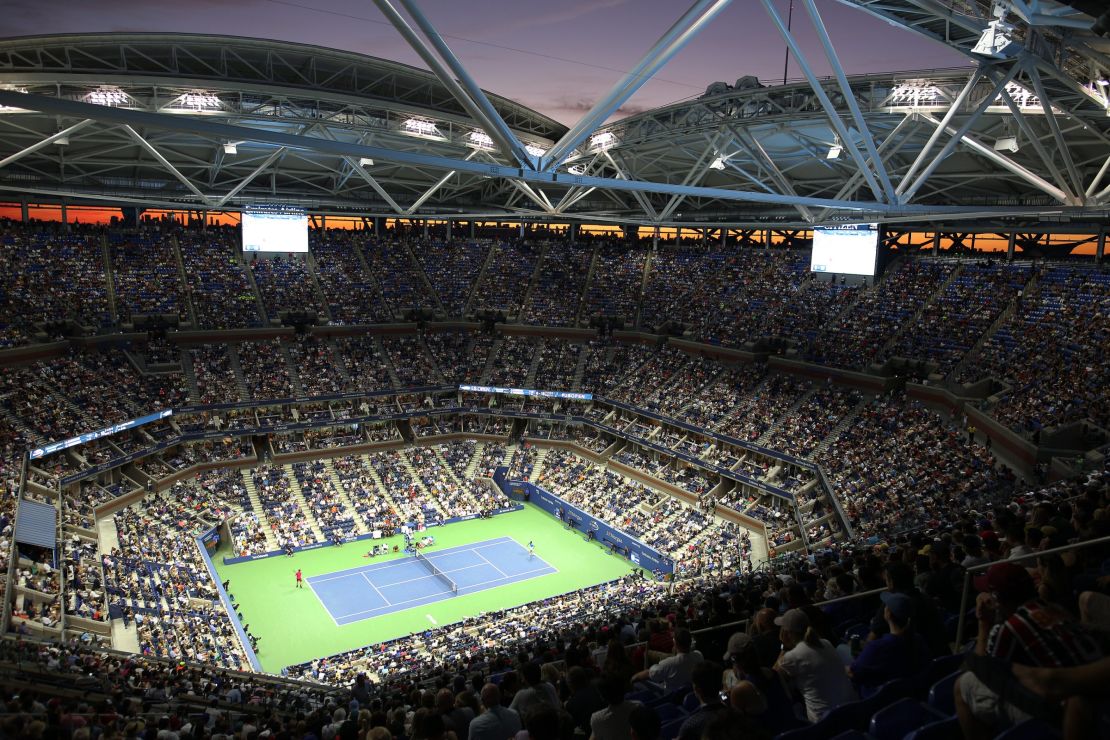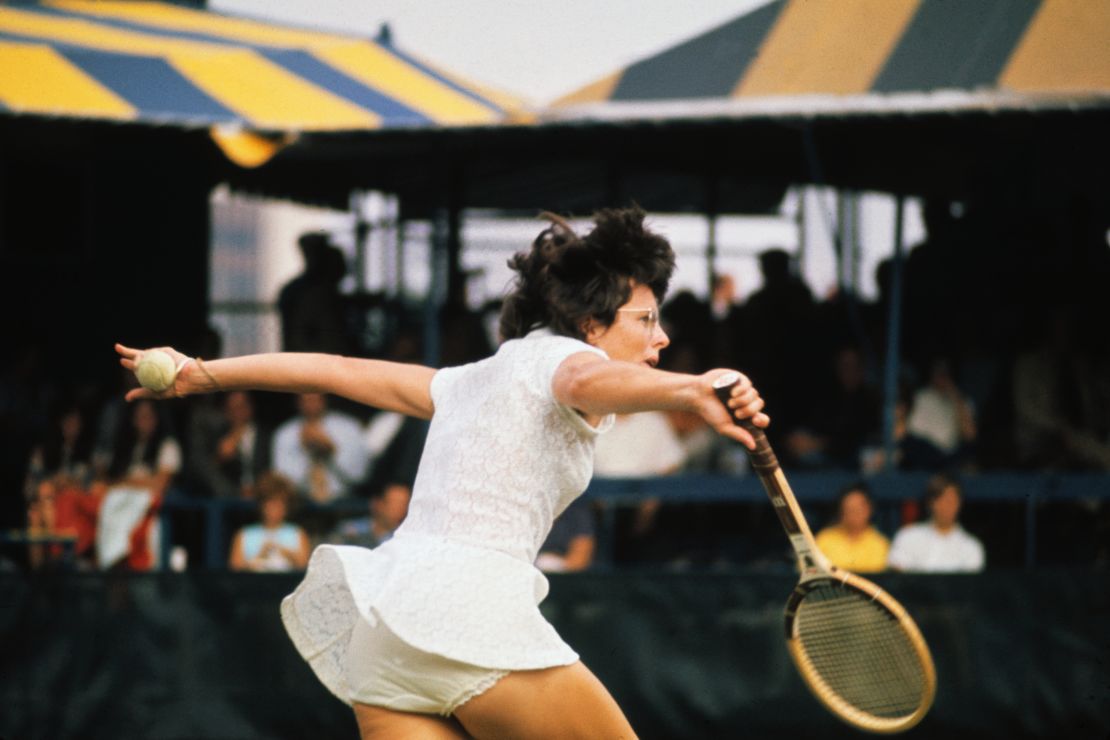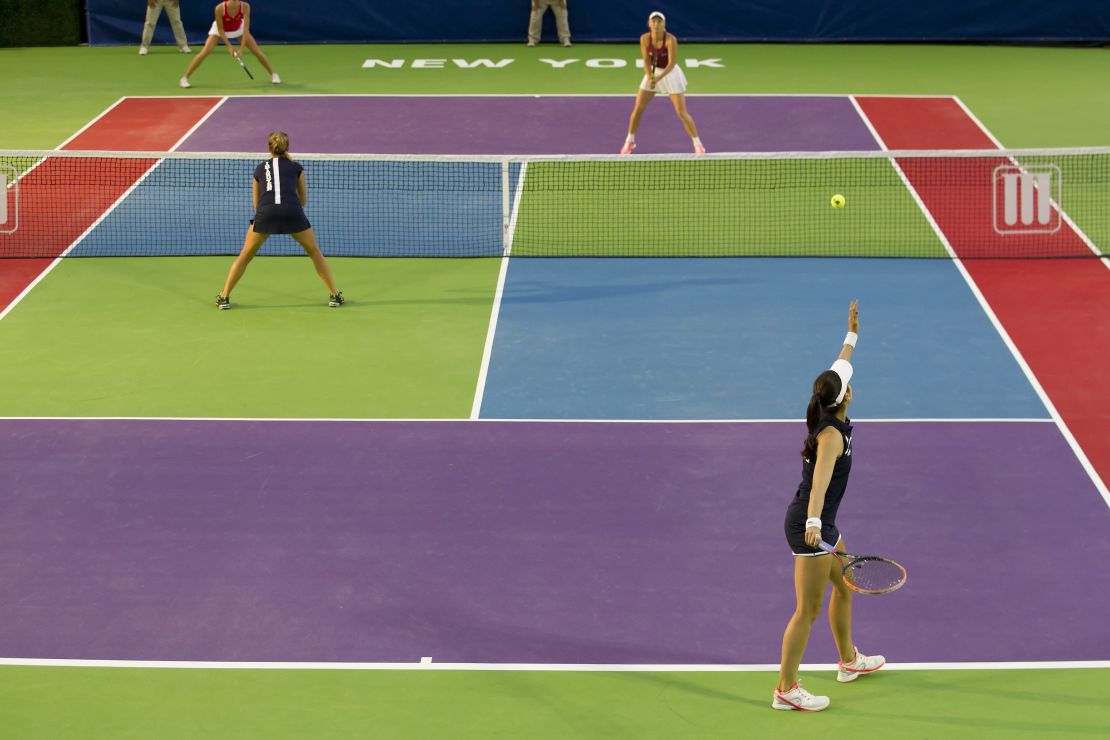Story highlights
Forest Hills hosted US Open until 1977
Crowds would fill its 14,000-seat venue
World Team Tennis helps stadium's revival
September 1977. In a leafy suburb 10 miles west of downtown New York, tennis history is being made.
Jimmy Connors, the home favorite and defending champion of the US Open, has just been defeated by Guillermo Vilas, the shaggy-haired Argentinian on his way to a then-record 46-match winning streak.
Crowds of people swarm onto the court, and Vilas is hoisted onto a fan’s shoulders.
Four decades later, the West Side Tennis Center is quiet – the once thriving home of American tennis is a shadow of its former self.
The action has moved three miles north of the Queens neighborhood to Flushing Meadows, where the USTA National Tennis Center has developed into the world’s largest public facility of its kind.
Record crowds watched this month as another world No. 1 and defending US Open champion, Novak Djokovic, was beaten in the men’s final by Stan Wawrinka.
The playing surface is now a blue hard court; the intimate, horseshoe-shaped stadium seating 14,000 people has been traded for a towering 23,771-strong venue with its new $150 million retractable roof.
While that ’77 final marked the start of a new era for US tennis, it also closed the door on another.
In 2010, Forest Hills Stadium was almost replaced by a new housing development. But now, 101 years since it first hosted the US national tournament, the site is enjoying something of a renaissance.
Thanks to the New York Empire, a new franchise in the World Team Tennis competition, famous names like McEnroe and Roddick are helping to revive the famous old venue.
Forest Hills: Former home of the US Open
Convenient and ‘electric’
Forest Hills hosted the US grand slam event 60 times – from 1915-20, and then again from 1924 to 1977. It also staged the Davis Cup final 10 times, more than any other venue worldwide. The courts were originally all grass until 1974 when, in line with the global trend, there was a switch to clay.
“What made Forest Hills appealing to spectators of all economic brackets was that you could take the subway from New York and be there in no time flat,” recalls Steve Flink, a journalist, commentator and lifelong tennis fanatic.
“You could drive from Connecticut, or Westchester, or Rhode Island,” he tells CNN’s Open Court show.
Read: Argentina earns place in Davis Cup final
“I used to see players on that No. 7 train, heading out there as a young fan. There was something very special about that, kids about to go back to school but being able to end their summers with what was the great American championships. It had a great atmosphere in that way, of families and business people coming together.”
Remembering the 1974 US Open final between Billie Jean King and Evonne Goolagong, Flink says he had “never seen a crowd more electrified by a women’s tennis match, ever.”
“There were fans sitting at courtside because there was such a big crowd that day,” he says. “They got really close to the action. Even if you were in the top row of the stands you felt like you were right on top of the match.”

The intimacy of the Forest Hills Stadium made it such a special place to play tennis; it also, however, contributed to its decline.
“There was just a little fence that would separate the fans from the players, so you could get up close and personal,” 1971 US Open champion Stan Smith told CNN.
“But when you look back and think of the concept of playing this grand slam event at this little venue – it is not even conceivable. At Flushing Meadows they probably have four times as much space as they did at Forest Hills.”
‘Gazing into the future’
The move to the nearby Flushing Meadows came with a touch of inevitability, but Flink says it also brought “a sense of sadness” to longtime Forest Hills patrons.
“To leave an elegant, private club setting to a public park facility? Some people weren’t ready to embrace that,” he explains. “But I believe that the USTA leaders who brought about that change were smart because they were gazing into the future.”

Maria Bueno, a tennis star of the 1950s and ’60s, won four of her seven grand slam singles titles at Forest Hills.
“It was really very beautiful,” the Brazilian told CNN. “The clubhouse was beautiful, the courts were beautiful, and everything was great. But then it became too small to hold any tournaments there.
“We had a tea party atmosphere at Forest Hills. You have flowers, you have grass. But the US Open now is huge – it’s very, very nice too, but it’s totally different. It’s not a private club.”
A source of invention
Bueno paints a picture of a bygone age, when sports stars still traveled by public transport.
“When I won I got a huge trophy, so I put the trophy under my arm with my rackets and off I went on the subway back to downtown New York where we were staying. It was what we were used to.”
Read: Wawrinka: Mental toughness helped me beat Djokovic

Quaint as it may seem now, Forest Hills helped pioneer the evolution of tennis.
In 1927, seeding of players was introduced. In 1950, Althea Gibson became the first black player to compete in a tennis grand slam.
In 1970, after experimenting with table tennis-style scoring, tiebreaks were invented at Forest Hills – “the single most important innovation in the history of tennis,” according to Flink.
In 1973, equal prize money was awarded to men and women for the first time. In 1975, floodlights were installed, meaning businessmen from New York could watch games after work.
A new lease of life?
In recent years, Forest Hills Stadium has been renovated as a concert arena. Having hosted stars such as The Beatles, Frank Sinatra, Jimi Hendrix, Diana Ross, and Bob Dylan in the 1960s and ’70s, it wasn’t until 2013 that its days as a music venue returned.
But Forest Hills made its name as an international tennis ground, and fans want it to return as such.
“There’s been a lull, and most of us believe that there should be something very big at this facility,” Flink says. “Keep it at a distance from the US Open, but maybe in the spring put on a big event, men and women, something that has real stature, something that reflects the importance of the club and represents the history of the game.”
World Team Tennis, founded in 1973 by US tennis legend King, could be starting to fill the tennis-shaped hole at Forest Hills.
A mixed-gender competition with an alternative five-game scoring system, it attracts some of tennis’ biggest names.
King, who won four US Open titles at Forest Hills, brought in Patrick McEnroe – brother of tennis legend John and a US Davis Cup-winning captain – to head the New York Empire team.
Read: Federer inspires wheelchair ace

Its lineup includes former world No. 1 Andy Roddick, a regular in the competition even before his retirement from top-level tennis in 2012.
Christina McHale is among those on the team roster still active on the pro circuit.
“It’s so exciting,” McHale told CNN. “When I found out I was drafted into the team I was super pumped. There’s so much history here. We’ve a lot of people coming out.
“I heard (Forest Hills) was very rundown and a few years ago they thought about knocking it down. Now it’s looking so nice and I hope they continue to play WTT, that it continues to grow and people keep coming to watch.”
McEnroe is upbeat about the tennis-playing culture World Team Tennis is creating at Forest Hills.
“When you see these players get together – we’ve got a couple of players from England, from Argentina, we’ve got a local American in Christina McHale – everybody really pulls together as a team,” he told CNN. “The camaraderie and the passion of the players is great.
“We’ve had nice crowds and I think the club and its members have been happy to have us. I’ll be back here. We’ve had some real hardcore fans come out and get behind the team. I’m hoping for bigger and better in 2017.”
Visit cnn.com/tennis for more news and videos
It may be a long way from the heady days of that Vilas-Connors final. The crowds are thinner, and the stakes not as high. But if tennis keeps being played, then maybe it won’t be long until Flushing Meadows has a noisy neighbor to contend with.


























